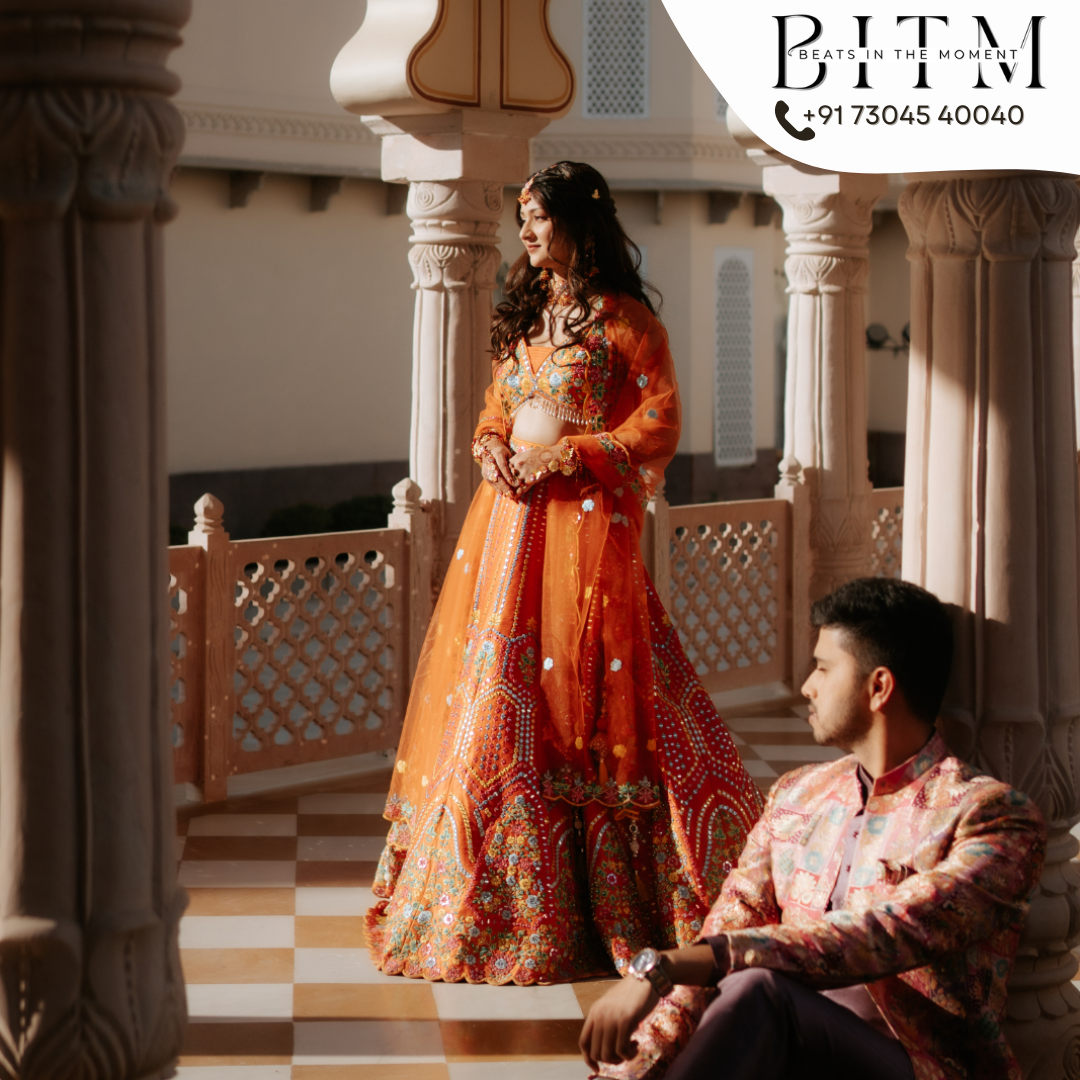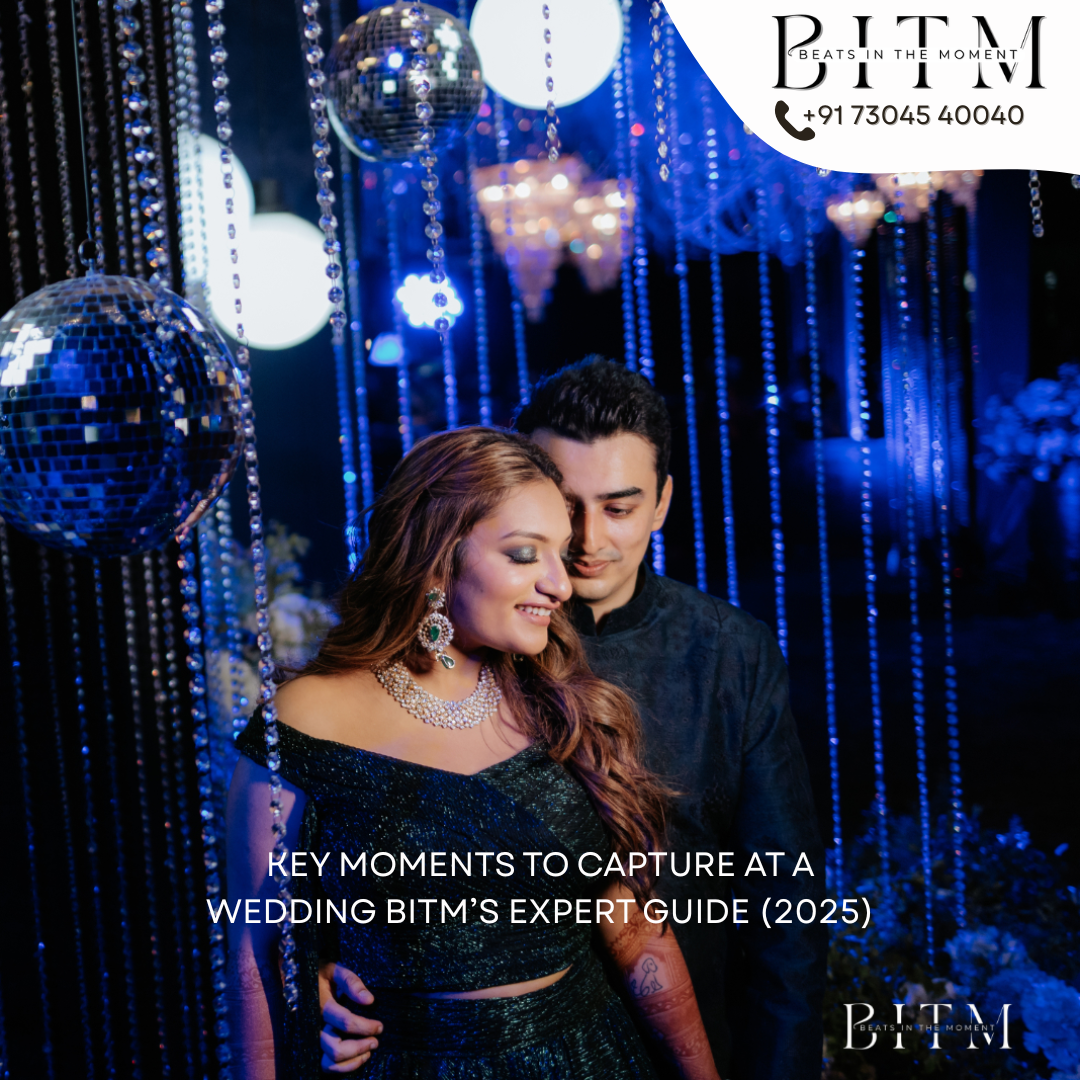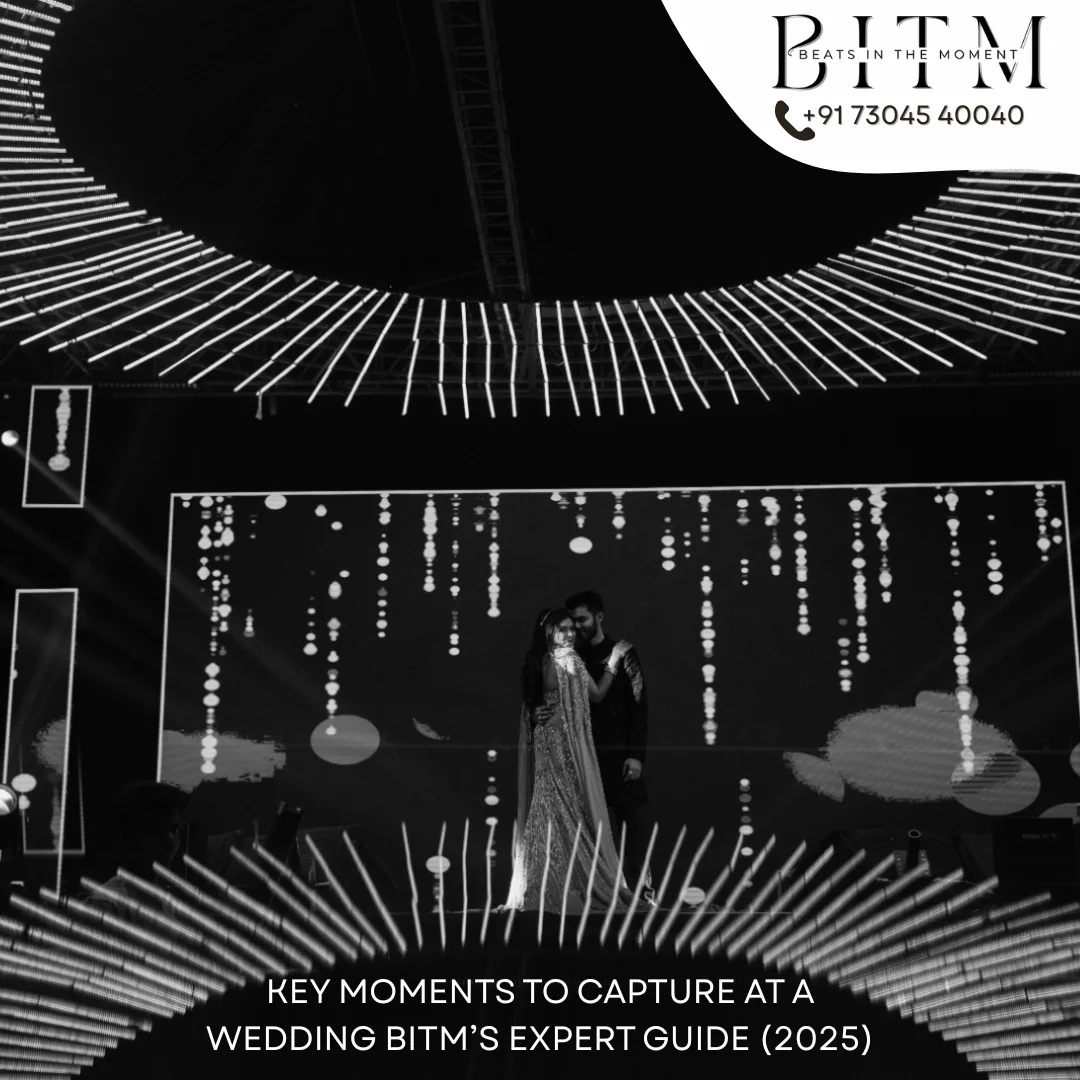A wedding’s photography should tell a coherent, emotionally truthful story. At BITM we combine documentary sensitivity with refined editorial technique to create albums that are both timeless and contemporary. This guide provides a professional, field-tested shot list and practical workflow to ensure you capture the moments that matter without slowing the day or missing spontaneous magic.
The essential moments (priority shot list)
These nine categories form the backbone of a comprehensive wedding gallery. Prioritize them and adapt to each couple’s schedule and style.
-
Getting Ready – detail & interaction: dress, shoes, rings, makeup, and intimate interactions (parents, attendants).
-
First Look / Private Reactions: if the couple chooses it, or candid reactions when they first see each other at the aisle.
-
Ceremony Highlights: processional(s), readings, vows, ring exchange, pronouncement, first kiss.
-
Family & Formal Portraits: efficient, pre-planned groupings.
-
Couple Portraits (Golden Hour): romantic, directional light portraits in flattering conditions.
-
Reception Key Moments: introductions, speeches, first dance, cake cutting.
-
Candid Guest Reactions: laughter, tears, embraces—these provide emotional texture.
-
Detail & Styling Shots: stationery, florals, place settings, signage, rings.
-
Grand Exit / Send-off: sparklers, confetti, lanterns, or other planned departures.
Why these moments and how to use the list?
A short prioritized list ensures indispensable images are secured while giving the photographer freedom to capture unscripted moments. Share the “must-have” categories with the couple (limit to 5–7 items) and use the rest as professional judgement calls. This balance preserves creative spontaneity while guaranteeing deliverables.
How to capture each moment professional guidance?
Getting Ready
-
Objective: Establish context and atmosphere.
-
Approach: Combine wide environmental frames (room, bridal party) with tight detail shots (rings, shoes, hands). Use window light and a shallow depth of field for intimate details. Capture interpersonal moments supportive looks, last-minute adjustments rather than only posed portraits.
First Look / First Reactions
-
Objective: Capture genuine emotion without ceremony constraints.
-
Approach: If a first look is planned, schedule it early to free up later time. Use a two-camera setup one for medium/portrait framing, another for tight emotional close-ups. Allow the couple a moment to compose themselves after the reveal.
Ceremony
-
Objective: Tell the narrative arc of the ceremony.
-
Approach: Scout the ceremony site beforehand to map sightlines and ideal camera positions. Use a primary wide-angle to show context and a secondary long-lens for intimate expressions. Respect the officiant and venue rules minimize movement during critical moments.
Family & Formals
-
Objective: Produce clean, organized family portraits quickly.
-
Approach: Prepare a printed list ordered from largest to smallest groups. Assign a family liaison (wedding planner or relative) to marshal subjects. Use a second shooter to expedite the process and keep the couple’s time away from guests minimal.
Couple Portraits
-
Objective: Create the album’s enduring, stylized frames.
-
Approach: Prioritize golden hour when possible for soft, flattering light. If time or schedule prevents golden hour, seek shaded locations or use controlled fill flash. Make the session conversational and directional to elicit natural poses and expressions.
Reception & Speeches
-
Objective: Record emotional arcs and key interactions.
-
Approach: Anticipate speech climaxes and position for both the speaker and audience reactions. Use fast primes with wide apertures for low-light, candid coverage.
Details
-
Objective: Document visual anchors that evoke memory.
-
Approach: Shoot details as early as possible—before guest movement alters the scene. Mix flatlay-style arrangements with contextual close-ups that include tactile textures and scale.
Exit
-
Objective: End the story with a definitive, cinematic closing frame.
-
Approach: Coordinate timing and safety with planners and venue staff. Pre-light routes where necessary and rehearse brief run-throughs to avoid chaos.
BITM’s 90-minute coverage template
-
00–20 minutes: First look / couple portraits (controlled environment).
-
20–40 minutes: Family and bridal party group photos (organized, prioritized).
-
40–70 minutes: Golden-hour creative portraits (if available).
-
70–90 minutes: Details, venue overviews, candid guest coverage.
This template prioritizes light and minimizes time away from the reception for the couple.
Gear & technical cheat-sheet
-
Primes: 35mm, 50mm, 85mm for low-light and portrait quality.
-
Zooms: 24–70mm and 70–200mm for versatility and distance control.
-
Support & backup: Secondary camera body, extra batteries, media cards.
-
Lighting: On-camera or small off-camera flash, small soft modifier for reception fill.
-
Optional: Drone (confirm venue permissions), light modifiers, and wireless transmitters.
2025 trends to consider
-
Documentary, photojournalistic storytelling prioritized over contrived posing.
-
Cinematic editorial portraits with moody color grading.
-
Embracing motion—intentional blur and dynamic framing for energy.
-
Inclusion of aerial/drone perspectives for large outdoor or destination weddings.
-
Nostalgic guest-driven content (disposable-camera or curated mobile uploads) for unfiltered moments.
These trends can be selectively incorporated to add contemporary value while keeping a timeless core.
Practical tips for couples
-
Limit the couple’s “must-have” list to 6 items to keep coverage realistic.
-
Do a venue walkthrough with your photographer to agree on locations and timing.
-
Schedule portraits around golden hour if possible.
-
Trust your photographer’s experience—communicate your priorities but allow creative license.
-
Allocate time for candid coverage; unscripted moments often become the most meaningful images.
Sources
-
“A Complete Wedding Photography Checklist” — Brides.com Brides
https://www.brides.com/wedding-photography-checklist-7481160 -
“A Wedding Photography Shot List to Help You Prioritize Your Pics” — TheKnot.com The Knot
https://www.theknot.com/content/great-wedding-photo-suggestions -
“Wedding Photography Checklist – Ultimate List & Free Download” — Wedissimo.com wedissimo
https://wedissimo.com/must-have-wedding-photos-checklist/








